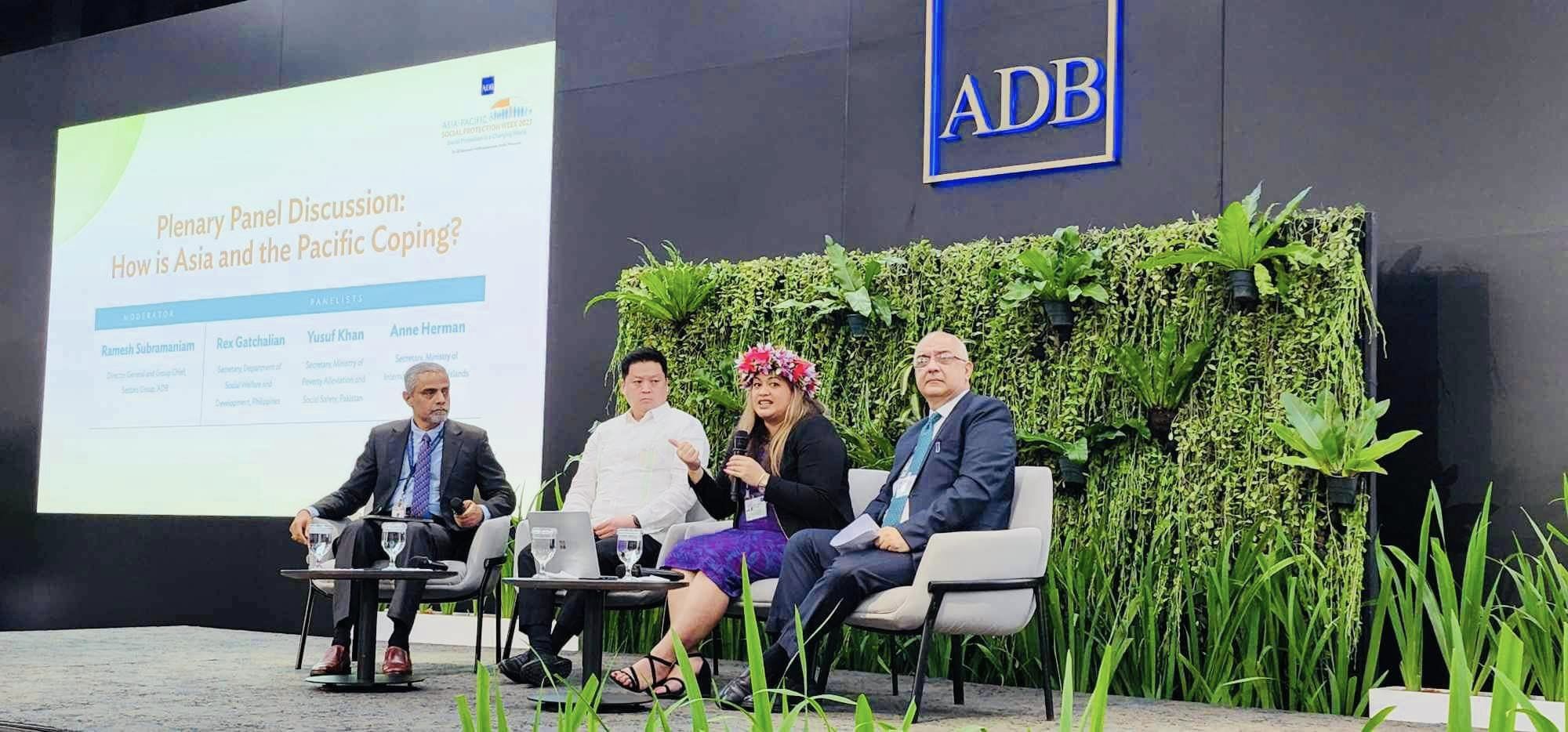The Pacific Island nation of Cook Islands, with just over 17,000 population, has one of the most comprehensive social protection policy in the Asia Pacific region. It has been in place since the 1960s – where successive governments have ensured that its poor, vulnerable and children are taken care of.
Anne Herman, the island nation’s secretary for internal affairs attributed this to the foresight and wisdom of its national leaders for the past 60 years to put into law a policy that protects and provides for the needs of its people – ensuring that no one is left behind.
“Our people acknowledge that government put its people first and is serious about leaving no one behind. Over the years, it didn’t matter whether it was the Democratic Party or the Cook Islands Party that was leading the government – it was a unified political decision to keep social protection because that’s what the people and the voters expected, explained Herman to PACNEWS in Manila.
“Our early political leaders like the late Sir Albert Henry and others were very visionary to come up with a social protection system back in the 1960s which includes amongst others pensions for the elderly and child benefit scheme. At that time, they were already thinking about not leaving anyone behind.
“The whole world is only talking about it now but our government has always done this for its people. It was a natural part of the Cook Islands Government policy to have a social protection system.
Herman said Cook Islands ‘generous’ social welfare benefit scheme can serve as a model for other countries.
“We have a very, very comprehensive social protection system with over 13 very high level benefits. Every child in the Cook Islands gets $50 (US$29) per fortnight, every pensioner at the age of 60 receives NZD$260(US$154), a fortnight. Once you turn 70, it goes up to NZ$350 (US$208) a fortnight. These are quite large commitments, in comparison to many other Pacific countries, but also on the world stage, said Herman.
Cook Islands social protection have been modified and improved from lessons learnt over the past six decades.
“This has been a platform that has grown our economy – allowing people to focus on things they need to do and be productive rather than worry about where my next loaf of bread was coming from etc. Women now work because their children receive child benefit payment and they can access maternity leave entitlements – giving them the freedom and the peace of mind to be able to be more productive rather than living day to day with worry.
“On top of these benefits, in 2000, there was a legislated contribution to the superannuation scheme, similar to some other schemes around the Pacific like the Fiji National Provident Fund (FNPF) in Fiji. We have the Cook Islands National Superannuation Fund (CINSF) which is 100 percent compulsory for all people working in the Cook Islands. Then on top of the contributory schemes, we have cash transfer benefits, free health care and free education. So it’s just layers and layers of social protection, said Herman.
She brushed aside concerns of breeding a generation of people who are reliant and entitled to receiving cash hand-out assistance from the government.
“I think it can be dangerous but in our case, successive governments have controlled the levels so well. For example, we conducted a research to find out if the NZD$1,000 (US$594) child newborn allowance amount was enough to stimulate the population. When we spoke to the beneficiaries, we found that it wasn’t – which means that what was given was enough to support mothers to buy basic necessities for the baby. It wasn’t too much to push more women to become pregnant just for the sake of receiving the newborn allowance. We found that it was there just to support women but not to change behaviour.
Herman said the national government in Rarotonga was also considering extending social protection benefits for its growing migrant workers – working and living with their families in Cook Islands.
“These migrant workers are contributing to the tax system and the Superannuation fund. They sometimes bring their children and we’ve noticed there’s a lot of cohabitation. We don’t want to be a country that is known for poor labor laws. We want to help migrant women workers get maternity leave, their children to access the NZD$50(US$29) in child allowance like other children in Cook Islands. This is what social protection is about. It’s about protecting everyone, not just our citizens, said Herman
She’s confident the Cook Islands social protection system can serve as a model for other countries.
“I think there’s a real opportunity at this meeting to create a Pacific platform for us to be able to talk more and understand each other. So, I definitely think Cook Islands is advanced in this area and has a lot of lessons to share on how we got here. I don’t think it’s the solution for everybody because we need to understand the context and the culture.
Herman acknowledged that culture played a key role in how Cook Islands successfully implemented social protection benefits for its people – during the pre and post COVID pandemic period.
“The community spirit of caring and giving to each other, not just in time of need, has helped propelled social protection and welfare of those that needed to be assisted. For example, when we are talking about the caregiving industry – many people used to look after their moms and dads, and Mamas and Papa, that’s our culture but that seems to be changing. We are seeing people being more individualistic and paying people to look after elderly parents, said Herman.
Herman was a panelist at the opening of the 2023 Asia Pacific Social Protection Week underway in Manila, Philippines at Asian Development Bank – to discuss how social protection systems in the Asia and Pacific region are coping after the COVID19 pandemic.
SOURCE: PACNEWS














